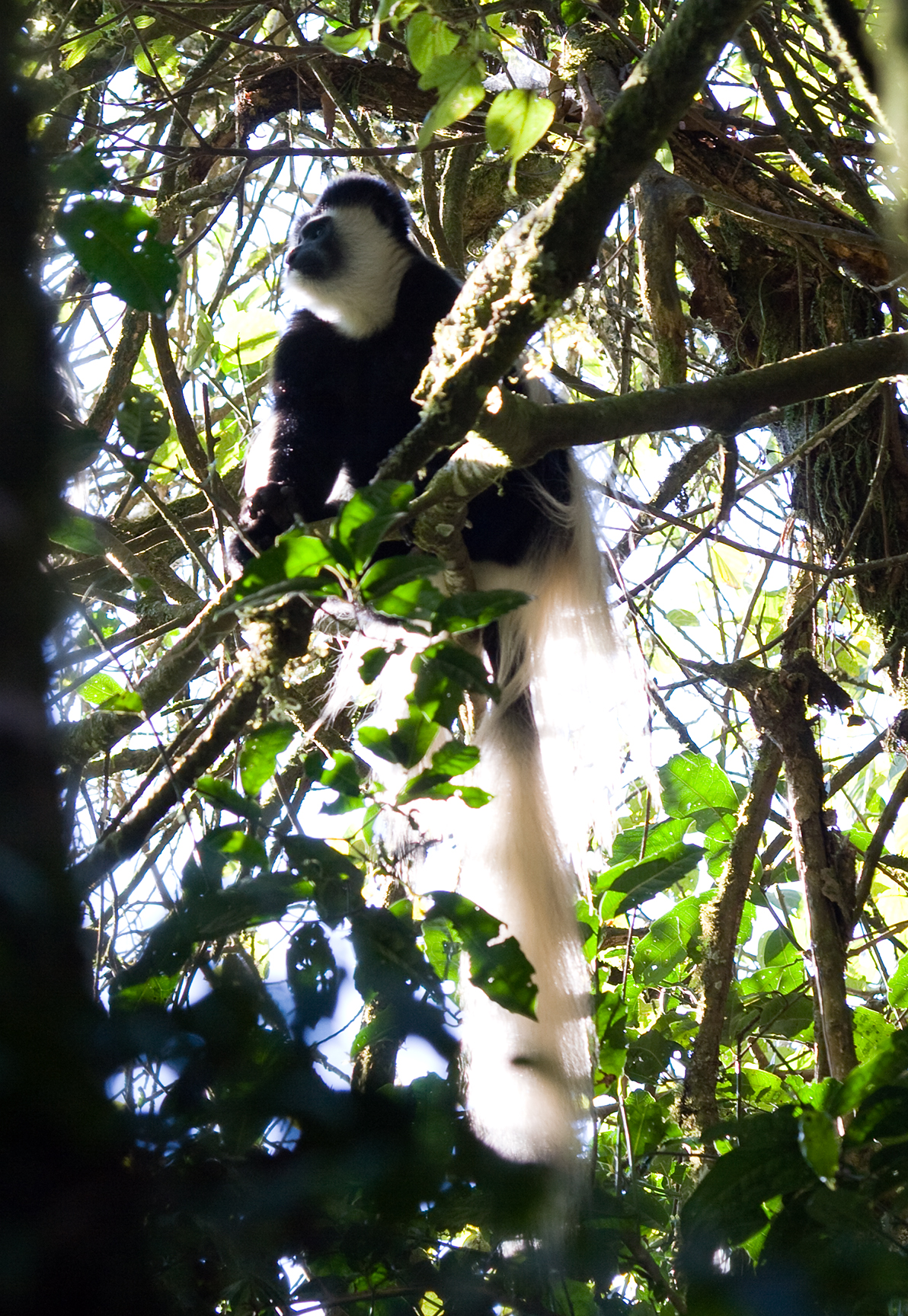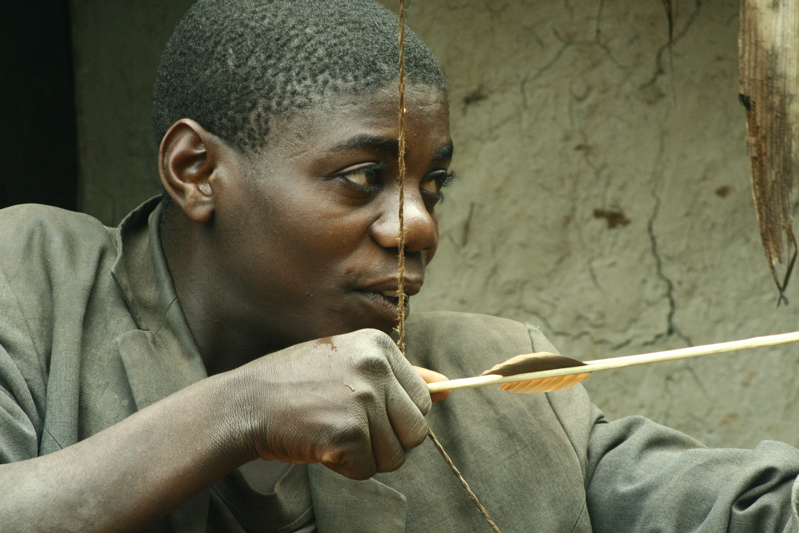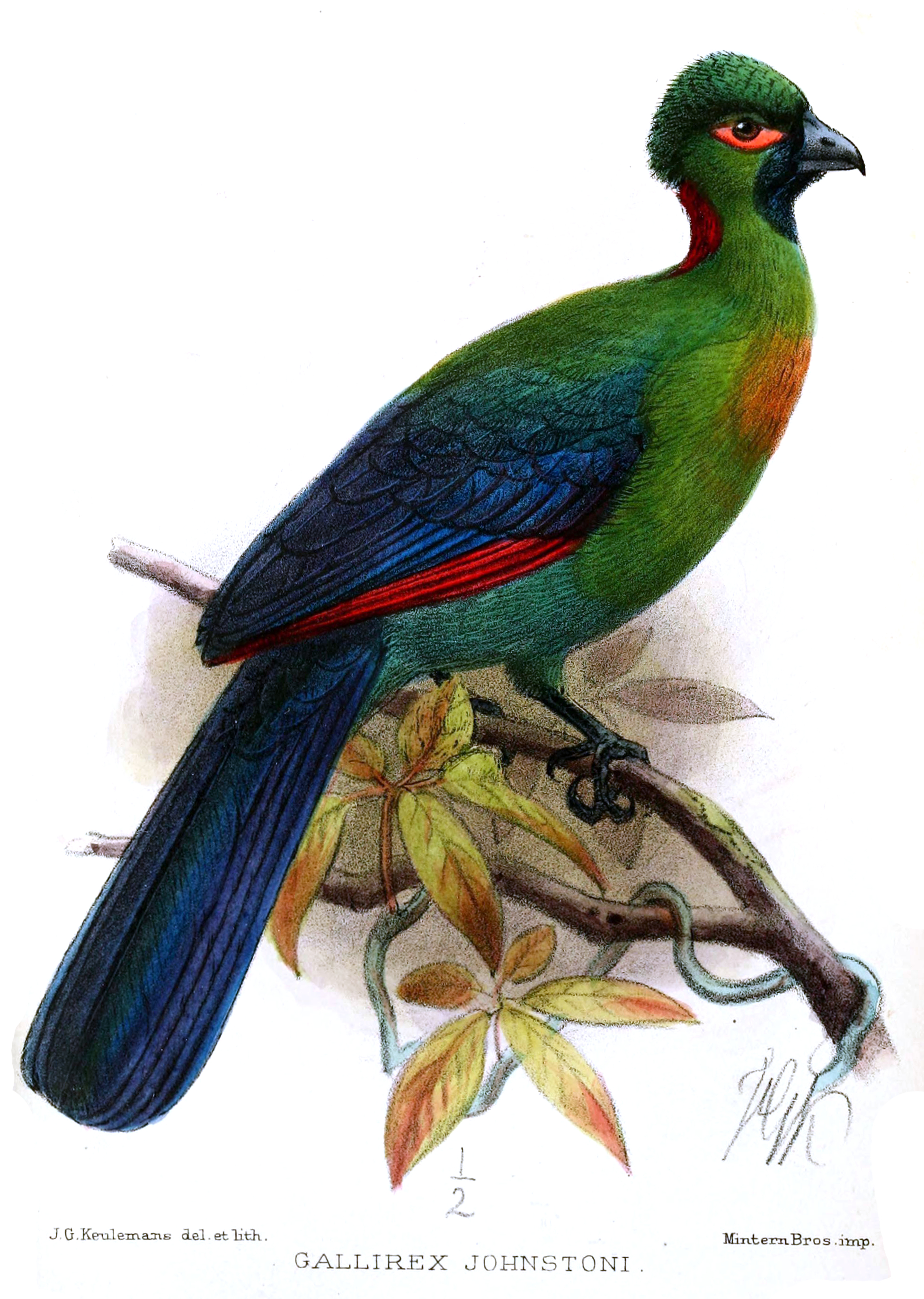|
Kibira National Park
The Kibira National Park (french: Parc national de Kibira) is a national park in northwestern Burundi. Overlapping four provinces and covering , Kibira National Park lies atop the mountains of the Congo-Nile Divide. It extends north from the provincial town of Muramvya to the border of Rwanda where it is contiguous with the Nyungwe National Park. Forest It is estimated that around 16% of the park consists of primary montane rainforest (the only montane forest in all of Burundi) and is adjacent to two large tea plantations, one in Teza and the other in Rwegura. The Park exceeds 1,100 m in elevation. Dominant tree species include ''Symphonia globulifera, Newtonia buchananii, Albizia gummifera'' and '' Entandrophragma excelsum''. The forest contains areas of montane bog and bamboo stands. A total of 644 plants grown in the park. There are 98 species of mammal in the forest and 200 species of birds have been recorded here. Although the Kibira has not been as thoroughly studied as so ... [...More Info...] [...Related Items...] OR: [Wikipedia] [Google] [Baidu] |
Burundi
Burundi (, ), officially the Republic of Burundi ( rn, Repuburika y’Uburundi ; Swahili language, Swahili: ''Jamuhuri ya Burundi''; French language, French: ''République du Burundi'' ), is a landlocked country in the Great Rift Valley at the junction between the African Great Lakes region and East Africa. It is bordered by Rwanda to the north, Tanzania to the east and southeast, and the Democratic Republic of the Congo to the west; Lake Tanganyika lies along its southwestern border. The capital cities are Gitega and Bujumbura, the latter being the country's largest city. The Great Lakes Twa, Twa, Hutu and Tutsi peoples have lived in Burundi for at least 500 years. For more than 200 of those years, Burundi was an independent Kingdom of Burundi, kingdom, until the beginning of the 20th century, when it became a German colony. After the First World War and German Revolution of 1918–19, Germany's defeat, the League of Nations "mandated" the territory to Belgium. After the Secon ... [...More Info...] [...Related Items...] OR: [Wikipedia] [Google] [Baidu] |
White-spotted Flufftail
The white-spotted flufftail (''Sarothrura pulchra'') is a species of bird Birds are a group of warm-blooded vertebrates constituting the class Aves (), characterised by feathers, toothless beaked jaws, the laying of hard-shelled eggs, a high metabolic rate, a four-chambered heart, and a strong yet lightweigh ... in the family Sarothruridae. It has a widespread range of presence across the African tropical rainforest. References white-spotted flufftail Birds of the African tropical rainforest white-spotted flufftail white-spotted flufftail Taxonomy articles created by Polbot {{Gruiformes-stub ... [...More Info...] [...Related Items...] OR: [Wikipedia] [Google] [Baidu] |
National Parks Of Burundi
National may refer to: Common uses * Nation or country ** Nationality – a ''national'' is a person who is subject to a nation, regardless of whether the person has full rights as a citizen Places in the United States * National, Maryland, census-designated place * National, Nevada, ghost town * National, Utah, ghost town * National, West Virginia, unincorporated community Commerce * National (brand), a brand name of electronic goods from Panasonic * National Benzole (or simply known as National), former petrol station chain in the UK, merged with BP * National Car Rental, an American rental car company * National Energy Systems, a former name of Eco Marine Power * National Entertainment Commission, a former name of the Media Rating Council * National Motor Vehicle Company, Indianapolis, Indiana, USA 1900-1924 * National Supermarkets, a defunct American grocery store chain * National String Instrument Corporation, a guitar company formed to manufacture the first resonator g ... [...More Info...] [...Related Items...] OR: [Wikipedia] [Google] [Baidu] |
Great Lakes Twa
The Great Lakes Twa, also known as Batwa (singular Mutwa), Abatwa or Ge-Sera, are a Bantu ethnic group native to the African Great Lakes region on the border of Central and East Africa. As an indigenous pygmy people, the Twa are generally assumed to be the oldest surviving population of the Great Lakes region. Current populations of Great Lakes Twa people live in the states of Rwanda, Burundi, Uganda and the eastern portion of the Democratic Republic of Congo. In 2000 they numbered approximately 80,000 people, making them a significant minority group in these countries. Apart from anthropological literature, the term "Twa" generally refers to the Twa of the Great Lakes region. There are a number of other Twa populations in the Congo forest, as well as southern Twa populations living in swamps and deserts where there has never been forest, but these are little known in the West. History Traditionally, the Twa have been semi-nomadic hunter-gatherers of the mountain fores ... [...More Info...] [...Related Items...] OR: [Wikipedia] [Google] [Baidu] |
Black-and-white Colobus Kilimanjaro
Black-and-white (B&W or B/W) images combine black and white in a continuous spectrum, producing a range of shades of grey. Media The history of various visual media began with black and white, and as technology improved, altered to color. However, there are exceptions to this rule, including black-and-white fine art photography, as well as many film motion pictures and art film(s). Photography Contemporary use Since the late 1960s, few mainstream films have been shot in black-and-white. The reasons are frequently commercial, as it is difficult to sell a film for television broadcasting if the film is not in color. 1961 was the last year in which the majority of Hollywood films were released in black and white. Computing In computing terminology, ''black-and-white'' is sometimes used to refer to a binary image consisting solely of pure black pixels and pure white ones; what would normally be called a black-and-white image, that is, an image containing shades of gr ... [...More Info...] [...Related Items...] OR: [Wikipedia] [Google] [Baidu] |
Black-and-white Colobus
Black-and-white colobuses (or colobi) are Old World monkeys of the genus ''Colobus'', native to Africa. They are closely related to the red colobus monkeys of genus '' Piliocolobus''. There are five species of this monkey, and at least eight subspecies. They are generally found in high-density forests where they forage on leaves, flowers and fruit. Social groups of colobus are diverse, varying from group to group. Resident-egalitarian and allomothering relationships have been observed among the female population. Complex behaviours have also been observed in this species, including greeting rituals and varying group sleeping patterns. Colobi play a significant role in seed dispersal. Etymology The word "colobus" comes from Greek (''kolobós'', "docked", "maimed"), so named because the thumb is stump-like. Taxonomy *Genus ''Colobus'' **Black colobus, ''C. satanas'' ***Gabon black colobus, ''C. s. anthracinus'' ***Bioko black colobus, ''C. s. satanas'' **Angola colobus, ''C. ang ... [...More Info...] [...Related Items...] OR: [Wikipedia] [Google] [Baidu] |
Common Chimpanzee
The chimpanzee (''Pan troglodytes''), also known as simply the chimp, is a species of Hominidae, great ape native to the forest and savannah of tropical Africa. It has four confirmed subspecies and a fifth proposed subspecies. When its close relative the bonobo was more commonly known as the pygmy chimpanzee, this species was often called the common chimpanzee or the robust chimpanzee. The chimpanzee and the bonobo are the only species in the genus Pan (genus), ''Pan''. Evidence from fossils and DNA sequencing shows that ''Pan'' is a sister taxon to the Human evolution, human lineage and is humans' closest living relative. The chimpanzee is covered in coarse black hair, but has a bare face, fingers, toes, palms of the hands, and soles of the feet. It is larger and more Robustness (morphology), robust than the bonobo, weighing for males and for females and standing . The chimpanzee lives in groups that range in size from 15 to 150 members, although individuals travel and forag ... [...More Info...] [...Related Items...] OR: [Wikipedia] [Google] [Baidu] |
Black-and-white-casqued Hornbill
The black-and-white-casqued hornbill (''Bycanistes subcylindricus'') also known as the grey-cheeked hornbill, is a large black and white hornbill. It has an oversized blackish bill with a large casque on top. The female is slightly smaller than the male and has a significantly smaller casque. It is a monogamous species, and pairs nest in suitable tree cavities. The female usually lays up to two eggs. The diet consists mainly of figs, fruits, insects and small animals found in the trees. Widespread and still locally common, the black-and-white-casqued hornbill is assessed as least concern on the IUCN Red List of Threatened Species. Taxonomy ''Bycanistes subcylindricus'' is part of the ''Bycanistes'' genus of sub-Saharian hornbills which currently include a total of six known species that all share a black and white plummage and are mostly frugivores. This genus has recently been related to the '' Bucorvus'' genus, known as Ground Hornbills. Most of the species in that genus ha ... [...More Info...] [...Related Items...] OR: [Wikipedia] [Google] [Baidu] |
Bar-tailed Trogon
The bar-tailed trogon (''Apaloderma vittatum'') is a species of bird in the family Trogonidae. It is a resident bird to central Africa that eats primarily insects and fruits. Description The bar-tailed trogon averages about long. The bill and feet are yellow, and the tail, long and broad as usual for trogons, has the underside narrowly barred with black and white. The male's head is blue-black with bronze iridescence. Below the eye are two yellow or orange patches of bare skin; above the eye is a yellow or grey patch. The upper breast is iridescent from violet to blue-green; the rest of the underparts are red. The back is green and the upper surface of the tail is blue-black or purple-black. The female's head is brown with less ornamental bare skin and its throat and breast are light cinnamon; otherwise it resembles the male. The immature is similar to the female, but has a white belly and pale spots on the wings formed by the tips of the wing coverts and inner secondaries. ... [...More Info...] [...Related Items...] OR: [Wikipedia] [Google] [Baidu] |
Grey Parrot
The grey parrot (''Psittacus erithacus''), also known as the Congo grey parrot, Congo African grey parrot or African grey parrot, is an Old World parrot in the family Psittacidae. The Timneh parrot ''(Psittacus timneh)'' once was identified as a subspecies of the grey parrot, but has since been elevated to a full species. Taxonomy The grey parrot was Species description, formally described in 1758 by the Swedish naturalist Carl Linnaeus in the 10th edition of Systema Naturae, tenth edition of his ''Systema Naturae''. He placed it with all the other parrots in the genus ''Psittacus'' and coined the binomial nomenclature, binomial name ''Psittacus erithacus''. Linnaeus erroneously specified the type locality (biology), type locality as "Guinea": the locality was later designated as Ghana in West Africa. The genus name is Latin for "parrot". The specific epithet ''erithacus'' is Latin and is derived from the Ancient Greek εριθακος (''erithakos'') for an unknown bird that ... [...More Info...] [...Related Items...] OR: [Wikipedia] [Google] [Baidu] |
Mountain Buzzard
The mountain buzzard (''Buteo oreophilus'') is a bird of prey that lives in montane forests in East Africa, it and the forest buzzard (''Buteo trizonatus'') of southern Africa were, until recently, considered to be a single species. Description A small buzzard and quite similar to the steppe buzzard ''Buteo buteo vulpinus'', the migratory subspecies of the Palearctic common buzzard which winters over most of Africa. The adult has brown upperparts with paler underparts with heavy brown blotches on the breast, belly, flanks and underwing coverts. The underside of the flight feathers is barred with a distinct black band along the rear edge of the wing. The tail is brown above, light grey below and shows faint narrow bars which are broadest just before the tail tip. Juveniles are buffier below and less heavily marked than the adults. Distribution The mountain buzzard occurs in the mountainous regions of eastern Africa from Ethiopia, west through Kenya, Uganda, South Sudan and Rwand ... [...More Info...] [...Related Items...] OR: [Wikipedia] [Google] [Baidu] |
Congo-Nile Divide (Rwanda-Burundi)
The Congo-Nile Divide region of Rwanda and Burundi is a mountainous area in the southern section of the Congo-Nile Divide, to the east of the Albertine Rift. The region includes the Nyungwe and Kibira national parks. The Bugoyi people live in the region. Geography The region of the divide is mountainous, with some peaks over high. Lake Kivu lies to the west of the mountains. The east of the divide slopes down to the central plateau of Rwanda, with elevations of . The Congo-Nile Divide Trail runs through the area, ending on the Butare-Cyangugu road, about west of Uwinka. The Congo-Nile Divide Trail is long. Created in 2007, it runs along a ridge that forms part of the divide. Flora and fauna There are bracken fields, sedge marshes and open fields, and primary, secondary and bamboo forests. Flora include ericaceous shrub and wildflowers. A total of 1,344 plant species have been recorded, including 187 endemic species and 18 species in the threatened category (CR, EN, ... [...More Info...] [...Related Items...] OR: [Wikipedia] [Google] [Baidu] |






